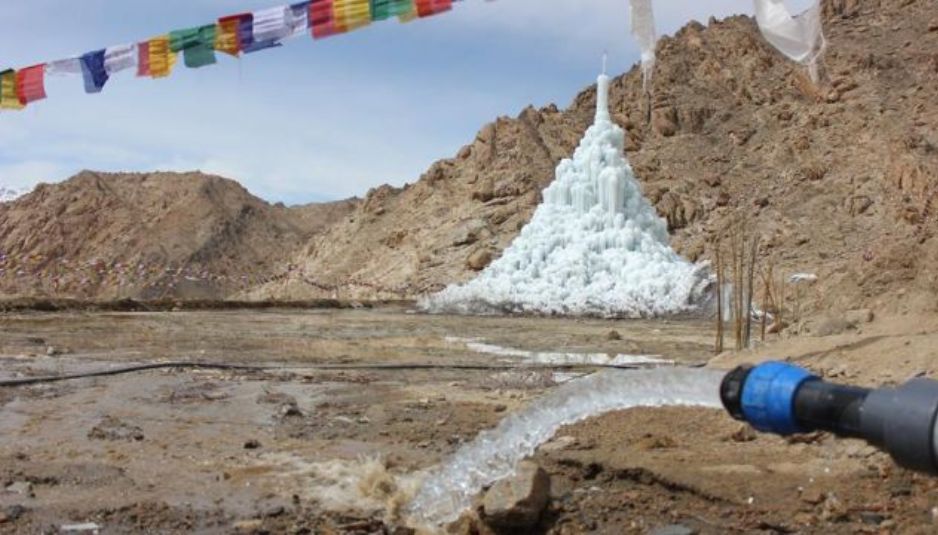Ladakh: from desertification to Ice Stupa glaciers

icestupa.org
The desertification is a climatic and environmental process usually irreversible. It causes the land degradation in arid, semi-arid and dry sub-humid areas. Lots of factors contribute to the development of this process, including climatic variation and human activities. One of these causes is melting glaciers phenomenon, caused by global warming. A solution used in the Ladakh‘s desert is set out below: the Ice Stupa artificial glaciers.
A problematic area
The desert in Ladakh is at the bottom of the Hymalaya, in Central Asia. It is one of the hugest desert areas of the world. It is a cold desert with wintry temperatures that tuch on -30 °C and 100 mm of annual average rain / snow fall. The villages are placed at elevation between 2.700 meters and 4.000 meters, surrounded by glacial flows.
During April and May the population that lives these areas has to face the problem of water shortage, caused by the drought of the streams. Moreover, in June there is a faster melting glaciers, so there is an excess of water that causes flood. In winter the flow is lowered, but constant, so it is not used by the population. In last years this problem has been getting worse because of the melting glaciers of Hymalaya caused by global warming.
The idea of artificial glaciers
To face the problem of drought, it is possible to freeze and hold water that flows during the winter. Hence the idea of artificial glaciers was born, that are able to melt during the period of drought.
In 2013 the engineer Sonam Wangchuk has realised the first prototype of Ice Stupa artificial glacier. This is a new model of artificial glacier, which is no more a frozen pond, but vertical: it is 6 meters high, obtained by freezing 150.000 litres of water. Freezing water vertically, it is possible to make towers and cones of ice high between 30 meters and 50 meters. These structures remember the sacred monuments called Stupa: that’s why the glaciers have been called Ice Stupa.

How do they work?
Gravity allows the development of the artificial glaciers. As a matter of fact water is piped, with thermal insulation, from the top down, without using power pumps. Using simple sprinklers, the water is sprayed erupting in fine jets and turning into ice before hitting the ground. The wind contributes to the accumulation of frozen water droplets.
The characteristic conical shape is necessary to reduce the area facing the sun, in order to optimize the storage of water and to decrease the speed of melting of the ice.
Ice Stupa glaciers melt about 5 times slower than a frozen pond.
Moreover it is important that the part of the land where glaciers rise is covered by mud. This practice prevents absorption of the water by the ground, after the melting of ice.
Awards
In 2016 Sonam Wangchuk won the Rolex Award for his innovation.
Wangchuk’s purpose is to create 20 Ice Stupa high 30 metri, and to start a significant “tree-planting” in the desert.
